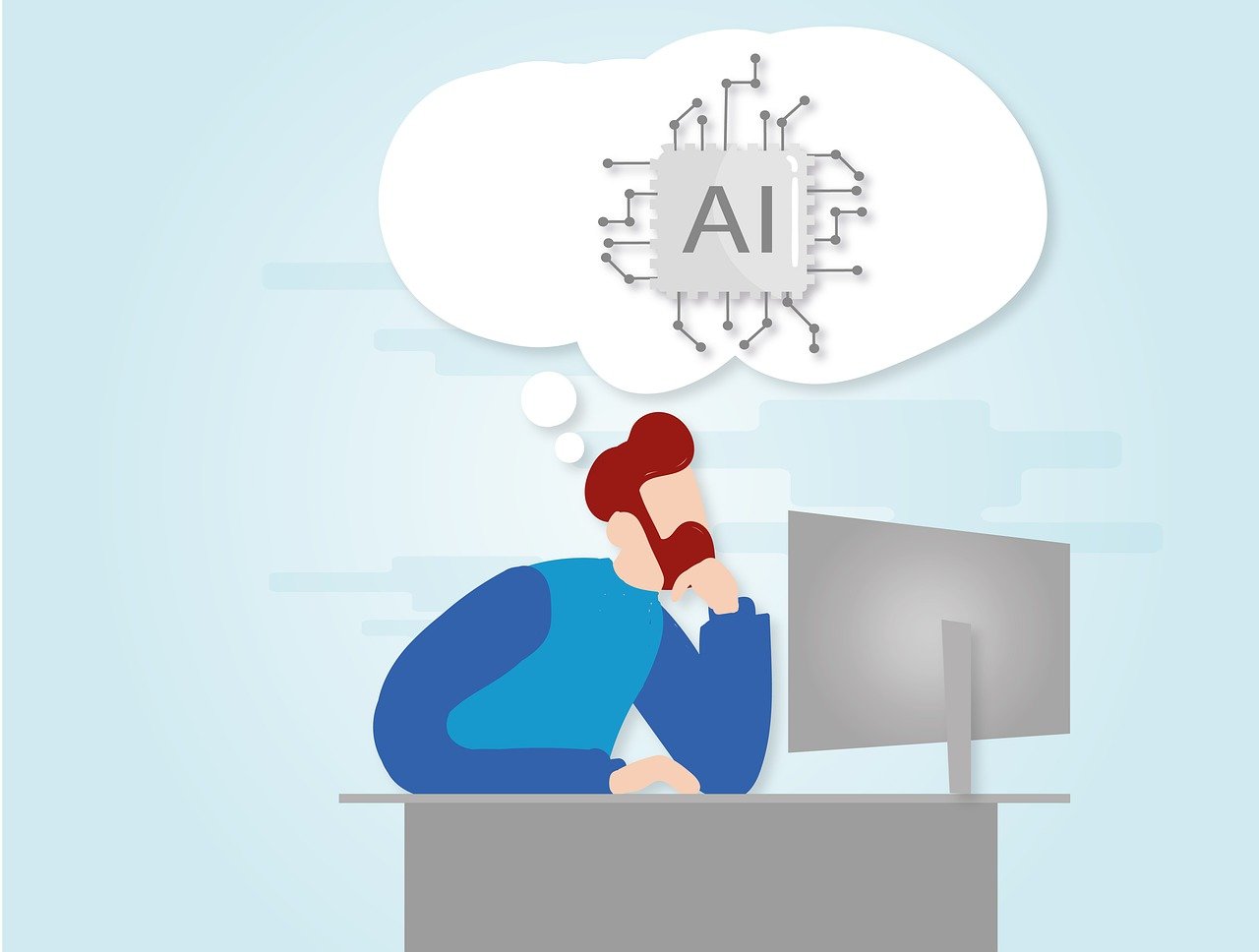How Technology is Reshaping the Field of Linguistics
In our rapidly evolving world, technology is not just a tool; it's a game changer that is reshaping various fields, and linguistics is no exception. The way we study, understand, and interact with languages is undergoing a dramatic transformation, thanks to advancements in technology. Imagine a world where language barriers dissolve, where communication is seamless, and where the richness of languages is preserved and celebrated through digital means. This is not a distant dream; this is the reality we are stepping into. The intersection of linguistics and technology is opening up new avenues for research, education, and communication that were previously unimaginable.
As we delve deeper into this topic, we will explore the profound impact of technology on linguistics, focusing on key areas such as computational linguistics, natural language processing, and digital linguistics. By examining these elements, we can gain insight into how technology is not only enhancing our understanding of languages but also redefining the very nature of linguistic research and communication. So, buckle up as we embark on this exciting journey through the digital landscape of linguistics, where every byte of data holds the potential to unlock new linguistic wonders!
One of the most significant advancements in the field of linguistics is the emergence of computational linguistics. This fascinating discipline merges the realms of computer science and linguistics, enabling sophisticated language processing and analysis. By employing algorithms and statistical models, researchers can analyze vast amounts of linguistic data, uncovering patterns and insights that would be impossible to discern through traditional methods. Imagine having the capability to analyze millions of texts in seconds—this is the power of computational linguistics!
The applications of computational linguistics are vast and varied. From developing language models that can predict the next word in a sentence to creating tools that assist in language translation, the impact is profound. For instance, search engines utilize computational linguistics to improve query understanding, making it easier for users to find the information they need. Additionally, social media platforms leverage these technologies to analyze user-generated content, enabling sentiment analysis and trend detection. The significance of computational linguistics in modern linguistic research cannot be overstated; it is paving the way for a deeper understanding of language in the digital age.
Another exciting development in linguistics is the application of machine learning techniques. These advanced algorithms are revolutionizing how we understand and process language. By training on large datasets, machine learning models can grasp the nuances of human language, enabling them to perform tasks such as translation, summarization, and even creative writing. It’s like teaching a child to speak by exposing them to countless conversations—over time, they learn to understand context, tone, and meaning.
At the heart of this transformation lies Natural Language Processing (NLP), a crucial area within linguistics that focuses on the interaction between computers and human language. NLP encompasses a variety of tools and techniques aimed at enabling machines to understand, interpret, and respond to human language in a valuable way. This includes everything from voice-activated assistants to sophisticated text analysis software. However, while NLP has made remarkable strides, it also faces challenges, such as understanding sarcasm or cultural nuances, which are often deeply embedded in language.
Text analysis and sentiment detection are vital components of NLP that play a significant role in understanding public opinion and language trends. By employing algorithms that can analyze the emotional tone behind a series of words, researchers can gauge how people feel about various topics. For instance, brands use sentiment analysis to monitor social media feedback, allowing them to adjust their strategies based on public perception. The methodologies behind these analyses are continually evolving, making them increasingly relevant in current linguistic studies.
Another fascinating application of NLP is the development of chatbots and conversational agents. These AI-driven tools have become commonplace in customer service and personal assistance, illustrating the practical implications of linguistic technology in our daily lives. Designed to simulate human conversation, chatbots can handle inquiries, provide information, and even engage in casual dialogue. Their increasing sophistication not only enhances user interaction but also offers linguists a unique opportunity to study conversational patterns and the evolution of language in digital formats.
Lastly, we cannot overlook the impact of speech recognition technologies on linguistics. These technologies have made significant strides, influencing how we interact with machines and each other. By converting spoken language into text, they enable hands-free operation and accessibility for individuals with disabilities. The development of these technologies is not just about convenience; it’s about inclusivity, allowing everyone to engage with language in meaningful ways. As these technologies continue to evolve, they present exciting opportunities for linguistic research, especially in understanding dialects and accents.
In conclusion, technology is not merely reshaping linguistics; it is revolutionizing it. From computational linguistics to machine learning and NLP, the advancements we are witnessing today are setting the stage for a future where language is more accessible, diverse, and understood than ever before. As we embrace these changes, we must also consider the implications for language preservation, education, and communication as we move forward into this digital age.
- What is computational linguistics? - It is a field that combines linguistics and computer science to analyze and process language using computational methods.
- How does machine learning impact language understanding? - Machine learning allows for the analysis of large datasets, enabling better understanding and processing of human language.
- What are some applications of natural language processing? - Applications include chatbots, sentiment analysis, and language translation services.
- What role does technology play in language preservation? - Technology helps document and preserve endangered languages through digital tools and resources.

The Rise of Computational Linguistics
In the ever-evolving landscape of linguistics, computational linguistics has emerged as a groundbreaking field that bridges the gap between language and technology. By integrating principles of computer science with linguistic theory, researchers can now analyze and process language in ways that were previously unimaginable. This fusion not only enhances our understanding of languages but also opens up new avenues for applications in various domains, from artificial intelligence to social media analysis.
Imagine a world where computers can not only understand human language but also generate it in a way that feels natural. That's the promise of computational linguistics. Through sophisticated algorithms and models, this discipline enables machines to perform tasks such as translation, sentiment analysis, and even text summarization. The significance of these applications cannot be overstated, as they are reshaping industries and enhancing our daily interactions with technology.
One of the key components of computational linguistics is its reliance on large datasets. By analyzing vast amounts of text, researchers can uncover patterns and trends that inform linguistic theory and practice. For instance, social media platforms generate billions of posts daily, creating a rich corpus for linguistic analysis. This data can help in understanding language evolution, dialect variations, and even the emergence of new slang. As a result, computational linguistics not only contributes to academic research but also plays a crucial role in real-world applications.
Furthermore, the rise of computational linguistics has led to the development of various tools and resources that aid linguists in their research. Below is a table showcasing some popular tools used in computational linguistics:
| Tool | Description | Application |
|---|---|---|
| NLTK (Natural Language Toolkit) | A suite of libraries and programs for symbolic and statistical natural language processing. | Text analysis, tokenization, parsing |
| spaCy | A fast and efficient library for advanced NLP tasks. | Named entity recognition, part-of-speech tagging |
| Stanford NLP | A collection of tools for processing natural language text. | Sentiment analysis, dependency parsing |
| OpenNLP | A machine learning-based toolkit for processing natural language text. | Tokenization, sentence splitting |
As we delve deeper into this exciting field, it's essential to consider the implications of computational linguistics on our understanding of language. With the ability to process and analyze language at an unprecedented scale, researchers can now explore questions that were once thought to be too complex or nuanced. For example, how do cultural contexts influence language use, and what role does technology play in shaping these dynamics? These questions are at the forefront of linguistic research, and computational linguistics provides the tools to tackle them.
In conclusion, the rise of computational linguistics is not just a trend; it is a transformative force that is redefining the study of language. As technology continues to advance, we can expect even more innovative applications and insights that will further enhance our understanding of human communication. The future of linguistics is undoubtedly intertwined with the advancements in computational methods, making this an exciting time for linguists and technologists alike.
- What is computational linguistics? Computational linguistics is the interdisciplinary field that combines computer science and linguistics to enable machines to understand and process human language.
- What are the applications of computational linguistics? Applications include machine translation, sentiment analysis, text summarization, and the development of chatbots.
- How does computational linguistics impact language research? It allows researchers to analyze large datasets, uncover linguistic patterns, and explore complex questions about language use and evolution.
- What tools are commonly used in computational linguistics? Popular tools include NLTK, spaCy, Stanford NLP, and OpenNLP, each offering various functionalities for language processing.

Machine Learning and Language Understanding
Machine learning is a game changer in the realm of linguistics. It's like having a supercharged brain that can analyze and understand languages at lightning speed. Imagine trying to decipher a complex text or understand the nuances of a dialect—now, think about how machine learning algorithms can do this with ease, processing vast amounts of data and identifying patterns that might take a human linguist years to uncover. This capability is not just a luxury; it's becoming a necessity in our increasingly digital world.
One of the most exciting advancements in this field is in Natural Language Processing (NLP). NLP allows computers to understand, interpret, and generate human language in a way that is both meaningful and useful. This technology is embedded in various applications we use daily, from virtual assistants like Siri and Alexa to translation services like Google Translate. These tools rely heavily on machine learning algorithms to improve their accuracy and efficiency, making communication across languages smoother than ever before.
Moreover, machine learning techniques enhance our understanding of language through various methods:
- Text Classification: This involves categorizing text into predefined groups, which is crucial for spam detection, sentiment analysis, and topic identification.
- Language Generation: Algorithms can create coherent and contextually relevant text, which has applications in content creation, chatbots, and even creative writing.
- Translation: Machine learning models are now capable of translating languages with remarkable accuracy, reducing the language barrier in global communication.
As we delve deeper into machine learning's role in language understanding, it's essential to recognize the challenges that accompany these advancements. Despite their capabilities, machine learning models can struggle with context, sarcasm, and cultural nuances. For instance, a phrase that is humorous in one culture might be completely misunderstood in another. Addressing these challenges requires continuous training and refining of algorithms to ensure they can adapt to the ever-evolving landscape of human language.
In addition to improving our understanding of existing languages, machine learning is also paving the way for new linguistic discoveries. By analyzing large corpora of text, researchers can identify emerging language trends, new slang, and shifts in language use over time. This data-driven approach provides insights that were previously unattainable, allowing linguists to keep pace with the rapid changes in language that occur in our digital age.
In conclusion, the fusion of machine learning and linguistics is not just a passing trend; it's a revolution that is reshaping how we interact with language. As technology continues to advance, the potential for machine learning to unlock new dimensions of language understanding is boundless, making it an exciting field for both researchers and enthusiasts alike.
Q: How does machine learning improve language translation?
A: Machine learning enhances language translation by using algorithms that analyze vast amounts of data to identify patterns and context, leading to more accurate translations.
Q: What are some challenges faced by machine learning in language understanding?
A: Challenges include understanding context, sarcasm, and cultural nuances, which can lead to misunderstandings in communication.
Q: Can machine learning create original content?
A: Yes, machine learning algorithms can generate coherent and contextually relevant text, which is used in applications like chatbots and automated content creation.

Natural Language Processing (NLP)
Natural Language Processing, or NLP, is a fascinating intersection of computer science and linguistics that focuses on enabling computers to understand, interpret, and generate human language in a way that is both meaningful and useful. Imagine having a conversation with your computer, and it not only understands your words but also grasps the nuances of your emotions and intentions. That's the magic of NLP! It's like teaching a child to not just recognize words but to understand the feelings behind them.
The importance of NLP in today's digital landscape cannot be overstated. As we generate vast amounts of text data daily—from social media posts to emails—the ability to analyze and interpret this information has become crucial. Companies and researchers are leveraging NLP to extract valuable insights from unstructured data, making it a powerful tool in fields like marketing, healthcare, and education. For instance, businesses can analyze customer feedback to gauge sentiment and improve their products or services, all thanks to NLP technologies.
At the core of NLP are several key components that work together to process language. These include:
- Tokenization: Breaking down text into smaller pieces, or tokens, such as words or phrases.
- Part-of-Speech Tagging: Identifying the grammatical parts of speech in a sentence, which helps in understanding the structure and meaning.
- Named Entity Recognition: Detecting and classifying key entities in text, such as names of people, organizations, and locations.
- Sentiment Analysis: Determining the emotional tone behind a series of words, which is essential for understanding public opinion.
Despite its advancements, NLP is not without challenges. Language is inherently complex, filled with idioms, slang, and cultural references that can trip up even the most sophisticated algorithms. Moreover, the context in which language is used plays a significant role in meaning. For example, the phrase "kick the bucket" has a very different meaning than its literal interpretation. This is where the ongoing research in NLP becomes vital, as scientists and engineers strive to create models that can navigate these complexities more effectively.
In recent years, the rise of deep learning has significantly enhanced NLP capabilities. Techniques like neural networks have allowed for more sophisticated language models that can generate human-like text, translate languages with remarkable accuracy, and even engage in conversations that feel natural. The introduction of models like GPT-3 has opened new doors, enabling applications ranging from creative writing assistants to advanced chatbots that can hold meaningful conversations.
In conclusion, NLP is not just a technological novelty; it is reshaping how we interact with machines and understand language itself. As we continue to refine these technologies, the potential applications are limitless, paving the way for a future where communication between humans and machines becomes seamless and intuitive. The journey of NLP is just beginning, and the possibilities are as exciting as they are expansive.
| Key Components of NLP | Description |
|---|---|
| Tokenization | Breaking text into smaller pieces for analysis. |
| Part-of-Speech Tagging | Identifying grammatical roles in sentences. |
| Named Entity Recognition | Classifying key entities in text. |
| Sentiment Analysis | Determining emotional tone in text. |
- What is Natural Language Processing? NLP is a field of AI that focuses on the interaction between computers and human language.
- How is NLP used in everyday applications? NLP powers chatbots, translation services, and sentiment analysis tools.
- What are some challenges faced by NLP? Challenges include understanding context, idioms, and the nuances of human language.
- What role does machine learning play in NLP? Machine learning enhances NLP by allowing systems to learn from data and improve over time.

Text Analysis and Sentiment Detection
In today's fast-paced digital world, text analysis and sentiment detection have emerged as essential tools for understanding the nuances of human communication. Imagine being able to sift through thousands of social media posts, reviews, or articles to extract meaningful insights about public opinion or trending topics. This is where technology steps in, allowing linguists and researchers to analyze vast amounts of text data with unprecedented speed and accuracy.
At its core, text analysis involves breaking down written content into manageable pieces to identify patterns, themes, and sentiments. By utilizing advanced algorithms and machine learning techniques, researchers can uncover hidden insights that would be nearly impossible to detect manually. For instance, sentiment analysis can gauge whether a piece of text expresses a positive, negative, or neutral sentiment, which is invaluable for businesses looking to understand customer feedback.
One of the most exciting aspects of sentiment detection is its versatility. It can be applied across various fields, including marketing, politics, and social sciences. Companies can analyze customer reviews to improve products and services, while politicians can assess public sentiment on policy proposals. The applications are endless! But how does it all work?
Text analysis typically involves several key steps:
- Data Collection: Gathering text from various sources, such as social media, blogs, or news articles.
- Preprocessing: Cleaning and preparing the text data by removing irrelevant information, such as stop words and punctuation.
- Feature Extraction: Identifying significant words or phrases that can provide insights into the text's meaning.
- Sentiment Classification: Using algorithms to classify the sentiment of the text based on the extracted features.
Moreover, the challenges in text analysis and sentiment detection are not to be overlooked. Sarcasm, cultural context, and nuanced expressions can often lead to misinterpretations. For example, the phrase "Great job!" might be sincere in one context but dripping with sarcasm in another. This is where ongoing research and development in natural language processing (NLP) play a critical role in refining these technologies.
As we continue to harness the power of text analysis and sentiment detection, we open doors to new methodologies in linguistic research. The ability to analyze language at scale not only enhances our understanding of communication but also allows for a more nuanced view of societal trends and individual behaviors. Ultimately, these advancements promise to enrich our understanding of human language in ways we are only beginning to explore.
1. What is text analysis?
Text analysis is the process of examining written content to identify patterns, themes, and sentiments. It involves breaking down text into manageable pieces for deeper understanding.
2. How does sentiment detection work?
Sentiment detection uses algorithms to classify the emotional tone of a piece of text, determining whether it expresses positive, negative, or neutral sentiments.
3. What are some applications of text analysis?
Text analysis has applications in various fields, including marketing for customer feedback analysis, politics for gauging public opinion, and social sciences for understanding language trends.
4. What challenges exist in sentiment analysis?
Challenges include dealing with sarcasm, cultural context, and nuanced expressions that can lead to misinterpretation of the text's sentiment.

Chatbots and Conversational Agents
Chatbots and conversational agents have emerged as fascinating examples of how technology is reshaping our interactions with language. These digital entities are not just programmed responses; they are designed to simulate human conversation, making them a crucial part of modern communication. Imagine having a personal assistant that can understand your queries and respond in real-time, just like a friend would. This is the magic of chatbots, and it’s changing the way we engage with information and services.
At the core of chatbots lies Natural Language Processing (NLP), a technology that allows computers to understand, interpret, and respond to human language in a meaningful way. NLP enables chatbots to analyze the context of a conversation, recognize intent, and even maintain a flow of dialogue that feels natural. This advancement has led to the creation of more sophisticated conversational agents that can handle a variety of tasks, from answering simple questions to providing customer support.
One of the most exciting aspects of chatbots is their ability to learn and improve over time. Using machine learning algorithms, these systems can analyze past interactions to enhance their responses. For instance, if a user frequently asks about a specific product, the chatbot can prioritize that information in future conversations. This adaptability makes chatbots not just tools, but evolving partners in communication.
The applications of chatbots are vast and varied. They are being used in customer service, where they can handle inquiries 24/7 without the need for human intervention. This not only saves time but also provides immediate assistance to users, enhancing their experience. In the healthcare sector, chatbots are being employed to provide medical advice and schedule appointments, making healthcare more accessible. Moreover, in education, they serve as tutors, providing personalized learning experiences for students.
However, the integration of chatbots into our daily lives isn't without challenges. While they can mimic human conversation, they often struggle with understanding nuances, humor, and emotional context. This limitation can lead to misunderstandings and frustration for users. Developers are continuously working to improve these systems, ensuring that they can handle a wider array of conversational scenarios.
As we move forward, the potential for chatbots and conversational agents seems limitless. With advancements in AI and machine learning, future iterations may become indistinguishable from human interactions, opening new doors for communication and accessibility. Just think about it—what if you could have a conversation with a chatbot that not only understands your words but also grasps your emotions? The future of linguistics and technology is indeed an exciting one, where the lines between human and machine communication blur.
- What are chatbots? Chatbots are AI-driven conversational agents that simulate human conversation through text or voice interactions.
- How do chatbots work? They use Natural Language Processing (NLP) to understand and respond to user queries in a conversational manner.
- What are the applications of chatbots? Chatbots are used in customer service, healthcare, education, and many other sectors to provide information and assistance.
- Can chatbots improve over time? Yes, through machine learning, chatbots can learn from past interactions to enhance their responses and performance.

Speech Recognition Technologies
Speech recognition technologies have come a long way, transforming the way we interact with our devices and each other. Can you imagine a world where you can simply speak your commands instead of typing them? This is not science fiction; it’s the reality we live in today! From virtual assistants like Siri and Alexa to voice-activated smart home devices, speech recognition has infiltrated our daily lives. These technologies utilize complex algorithms and vast amounts of data to understand and process human speech, making communication with machines more intuitive than ever.
The development of speech recognition technologies relies heavily on advancements in machine learning and natural language processing (NLP). At the core of these systems are neural networks that are trained on extensive datasets of spoken language. This training allows them to recognize patterns and nuances in speech, including accents, dialects, and even emotional tones. As a result, users can experience a more personalized interaction with their devices. But how does this all work?
| Component | Function |
|---|---|
| Acoustic Model | Analyzes the audio signals to identify phonemes and sounds. |
| Language Model | Predicts the likelihood of sequences of words, improving accuracy. |
| Decoder | Combines data from the acoustic and language models to produce text. |
One of the most fascinating aspects of speech recognition is its ability to adapt and improve over time. As users interact with these technologies, they learn from the feedback provided, refining their accuracy and responsiveness. This adaptive learning process is akin to how we learn to communicate better with one another, making speech recognition systems more effective in understanding unique speech patterns and preferences.
Moreover, the implications of speech recognition technologies extend beyond convenience. They play a crucial role in enhancing accessibility for individuals with disabilities. For instance, voice recognition allows people with mobility impairments to control their devices without needing to use traditional input methods. This technology is a game-changer, promoting inclusivity and ensuring that everyone has access to the digital world.
However, despite the impressive advancements, speech recognition technologies are not without their challenges. Variability in accents, background noise, and homophones can still pose significant hurdles. Furthermore, privacy concerns arise as these systems often require access to personal data to function optimally. Users must navigate the balance between convenience and security, making informed choices about their interactions with these technologies.
In conclusion, speech recognition technologies are reshaping our communication landscape, making it easier and more efficient to interact with machines. As they continue to evolve, we can anticipate even more innovative applications that will further enhance our daily lives. The future is indeed bright for speech recognition, promising a world where talking to our devices becomes as natural as chatting with a friend.
- What is speech recognition technology? - It is a technology that allows machines to understand and process human speech, enabling voice commands and interactions.
- How does speech recognition work? - It uses algorithms and machine learning models to analyze audio signals and convert them into text.
- What are some applications of speech recognition? - Popular applications include virtual assistants, transcription services, and accessibility tools for individuals with disabilities.
- What challenges does speech recognition face? - Challenges include understanding different accents, background noise interference, and privacy concerns related to data usage.

Digital Linguistics and Language Preservation
In an age where technology permeates every aspect of our lives, it has become a powerful ally in the quest for language preservation. Digital linguistics is at the forefront of this movement, utilizing innovative tools and methodologies to document and protect endangered languages. As we witness the rapid decline of many languages worldwide, the role of technology in safeguarding linguistic diversity has never been more critical. Imagine a world where the rich tapestry of human language is preserved for future generations; this is the promise that digital linguistics holds.
One of the most significant contributions of digital linguistics is the creation of digital archives. These archives serve as repositories for audio recordings, written texts, and cultural narratives associated with endangered languages. By digitizing these resources, linguists can ensure that they are not lost to time. For instance, initiatives like the Endangered Languages Archive at SOAS University of London provide a platform where researchers and the public can access valuable linguistic data, fostering a greater understanding of these languages and their cultural contexts.
Furthermore, technology enables the development of interactive tools that facilitate language learning and revitalization. Language learning apps, such as Duolingo or Rosetta Stone, are now incorporating lesser-known languages into their offerings, making it easier for individuals to engage with and learn these languages. This accessibility is crucial, as it not only promotes language acquisition but also raises awareness about the importance of preserving linguistic heritage.
Moreover, digital linguistics employs corpus analysis to study and document languages. By compiling large datasets of spoken and written language, researchers can analyze linguistic patterns and structures that may not be evident from smaller samples. This approach has led to new insights into the grammar, syntax, and phonetics of endangered languages, providing a comprehensive understanding of their unique features. The implications of such research extend beyond academia; they can inform educational practices and language revitalization efforts.
To illustrate the impact of digital linguistics on language preservation, consider the following table that highlights some key technologies and their applications:
| Technology | Application | Impact |
|---|---|---|
| Digital Archives | Documenting endangered languages | Preservation of linguistic data |
| Language Learning Apps | Teaching lesser-known languages | Increased accessibility and engagement |
| Corpus Analysis | Studying language patterns | New insights into language structure |
As we delve deeper into the realm of digital linguistics, it’s essential to recognize the collaborative efforts between linguists, technologists, and communities. Many indigenous groups are actively involved in documenting their languages, often using technology to create their own resources. This grassroots approach not only empowers communities but also ensures that the languages are represented authentically. By combining traditional knowledge with modern technology, we are paving the way for a more inclusive and comprehensive understanding of the world's linguistic diversity.
In conclusion, digital linguistics is not just a field of study; it is a movement that champions the preservation of languages on the brink of extinction. Through innovative technologies, collaborative efforts, and a commitment to cultural heritage, we can safeguard the voices of the past and ensure that they resonate in the future. As we continue to embrace technology, let’s remember that it serves as a bridge connecting us to our linguistic roots, enriching our understanding of humanity as a whole.
- What is digital linguistics? Digital linguistics is the study of language using digital tools and methods, focusing on the preservation and documentation of languages, especially endangered ones.
- How does technology help in language preservation? Technology aids in language preservation by creating digital archives, developing language learning apps, and enabling corpus analysis to study language patterns.
- Can anyone contribute to language preservation efforts? Absolutely! Many initiatives welcome contributions from individuals, especially those from the communities whose languages are being preserved.

Corpus Linguistics in the Digital Age
In today's fast-paced world, corpus linguistics has emerged as a powerful tool that leverages technology to analyze language in ways that were previously unimaginable. With the advent of the digital age, researchers now have access to vast amounts of linguistic data, enabling them to uncover patterns, trends, and nuances within languages. Imagine having a library that contains every conversation, every written word, and every utterance ever made—this is what digital corpora offer to linguists.
Corpus linguistics relies on the systematic collection and analysis of language data, often through large corpora that are compiled from various sources, including books, articles, websites, and spoken dialogues. The beauty of this methodology is that it allows linguists to study language as it is naturally used, rather than relying solely on prescriptive rules or theoretical models. In the digital age, the creation and analysis of these corpora have become remarkably efficient and insightful.
One of the most significant advancements in corpus linguistics is the ability to utilize computational tools for data analysis. Software applications can now process millions of words in seconds, identifying frequencies of terms, collocations, and grammatical structures. For instance, researchers can analyze how often a particular word appears in different contexts, helping them understand its evolving meaning over time. This capability opens the door to a myriad of applications, from understanding language change to discovering regional dialects.
Moreover, the integration of machine learning techniques has revolutionized the field. By employing algorithms that can learn from data, linguists can uncover hidden patterns that may not be immediately apparent. For example, sentiment analysis can be applied to large corpora to gauge public opinion on various topics, revealing how language reflects societal attitudes. This is particularly useful in fields such as marketing, social sciences, and political analysis.
As we delve deeper into the digital landscape, the role of corpus linguistics continues to evolve. The accessibility of online databases and repositories means that researchers from all over the world can collaborate and share their findings. This global exchange of information fosters a richer understanding of language diversity and promotes linguistic research that is more inclusive and comprehensive.
However, with great power comes great responsibility. The ethical implications of using large datasets must not be overlooked. Issues such as data privacy and the potential for bias in language representation are critical considerations for researchers. As we harness the capabilities of technology, it is essential to ensure that our methodologies are transparent and equitable.
In summary, corpus linguistics in the digital age is a dynamic field that is reshaping our understanding of language. By leveraging advanced computational tools and embracing collaborative efforts, linguists can explore the intricacies of language like never before. As we continue to push the boundaries of what is possible, the future of linguistics looks brighter than ever, promising new discoveries that will enrich our understanding of human communication.
- What is corpus linguistics? Corpus linguistics is the study of language as expressed in samples (corpora) or "real world" text. It uses large databases to analyze language patterns and usage.
- How has technology impacted corpus linguistics? Technology has enabled the collection and analysis of vast amounts of linguistic data, improving the efficiency and depth of linguistic research.
- What are some applications of corpus linguistics? Applications include language teaching, sociolinguistic research, sentiment analysis, and more, benefiting various fields such as marketing and social sciences.
- What ethical considerations are involved in corpus linguistics? Researchers must consider data privacy and potential biases in their datasets to ensure responsible and equitable research practices.

Language Learning Apps and Resources
In today's fast-paced world, learning a new language has never been more accessible, thanks to the explosion of language learning apps and resources. These digital tools are not just a passing trend; they represent a significant shift in how we approach language acquisition. Imagine having a personal tutor in your pocket, available 24/7, guiding you through the intricacies of a new language. That's the power of technology in linguistics!
Language learning apps like Duolingo, Babbel, and Rosetta Stone have revolutionized the way learners engage with languages. They offer interactive lessons that adapt to your learning pace, making the process both fun and effective. For instance, Duolingo uses gamification to keep users motivated, rewarding them with points and achievements as they progress. This approach not only enhances user engagement but also fosters a sense of accomplishment, which is crucial for language retention.
Furthermore, many of these apps incorporate advanced algorithms that analyze user performance, allowing them to tailor lessons based on individual strengths and weaknesses. This personalized approach means that learners can focus on areas where they struggle, making their study sessions more efficient. It’s like having a customized learning plan designed just for you!
But it doesn't stop there. The rise of social features within these apps has created vibrant communities of learners. Users can connect with native speakers or fellow learners, facilitating real-life conversations that are vital for mastering a language. Imagine practicing your Spanish with someone in Spain or your French with a native speaker from Paris—all from the comfort of your home!
In addition to apps, there are also numerous online resources available. Websites like BBC Languages and Memrise provide a plethora of materials ranging from vocabulary lists to interactive quizzes. These resources are invaluable for learners who prefer a more structured approach or those who want to supplement their app-based learning. They often feature audio and video content, enhancing the learning experience by allowing users to hear pronunciation and see cultural contexts.
Moreover, the integration of artificial intelligence (AI) in language learning is paving the way for even more innovative solutions. AI-powered chatbots can simulate conversations, providing learners with a safe space to practice without the fear of making mistakes. This not only helps improve fluency but also builds confidence, which is essential when tackling a new language.
Despite the plethora of options available, choosing the right app or resource can be overwhelming. Here are a few factors to consider:
- User Interface: Is the app easy to navigate?
- Content Variety: Does it offer diverse learning materials?
- Community Features: Can you interact with other learners or native speakers?
- Cost: Is it free, or does it require a subscription?
Ultimately, the key to successful language learning is consistency and practice. Whether you’re using an app, an online resource, or a combination of both, regular engagement with the language is essential. Just like exercising a muscle, the more you practice, the stronger your skills will become. So, grab your smartphone, download a language learning app, and embark on your linguistic adventure!
Q: Are language learning apps effective?
A: Yes, many studies show that language learning apps can be highly effective, especially when used consistently as part of a broader learning strategy.
Q: Can I learn a language solely through apps?
A: While apps are a great tool, combining them with other resources, such as conversation practice and immersion, can enhance your learning experience.
Q: What is the best language learning app?
A: The best app depends on your learning style and goals. Popular options include Duolingo, Babbel, and Rosetta Stone, each with unique features.
Q: How much time should I spend on language learning each day?
A: Even 15-30 minutes daily can lead to significant progress. The key is regular practice rather than long, infrequent sessions.
Frequently Asked Questions
- What is computational linguistics?
Computational linguistics is a fascinating field that merges computer science with linguistics. It focuses on enabling computers to process and analyze human languages, making it easier for researchers to study language patterns and structures. Think of it as teaching computers to speak and understand human languages, which opens up a whole new world of possibilities in linguistic research!
- How does machine learning impact language understanding?
Machine learning is a game-changer in the realm of language understanding. By utilizing algorithms that can learn from data, machine learning enhances natural language processing (NLP) capabilities. This means computers can now understand context, detect sentiment, and even generate human-like text. It's like giving computers a brain that can learn and adapt, making them incredibly powerful tools for linguists!
- What are the applications of Natural Language Processing (NLP)?
NLP has a wide range of applications that are reshaping how we interact with technology. From chatbots that assist with customer service to sentiment analysis tools that gauge public opinion, NLP is everywhere! It helps in translating languages, summarizing texts, and even in voice-activated assistants. Imagine having a personal assistant that understands your every word—that's the magic of NLP!
- How do speech recognition technologies work?
Speech recognition technologies convert spoken language into text by analyzing sound waves and matching them to known language patterns. These technologies have evolved significantly, allowing for more accurate transcriptions and better user interaction. Think of it as teaching computers to listen and understand, making our conversations with machines smoother and more intuitive!
- What is digital linguistics?
Digital linguistics focuses on the preservation and documentation of languages, especially endangered ones, using technology. This includes creating digital archives, databases, and resources that help maintain linguistic diversity. It's like having a digital library of languages that ensures they aren't lost to time, making it a vital field for cultural preservation!
- How has corpus linguistics changed with technology?
Corpus linguistics has been transformed by technology, allowing researchers to analyze vast amounts of language data quickly and efficiently. With the help of digital tools, linguists can create extensive corpora that reveal new insights into language use, trends, and variations. Imagine having a treasure trove of language data at your fingertips—that's what technology has done for corpus linguistics!
- What role do language learning apps play in linguistics?
Language learning apps have revolutionized how people acquire new languages. They offer interactive features, personalized learning paths, and immediate feedback, making language learning more accessible and engaging. This shift not only aids individual learners but also influences linguistic studies by providing insights into language acquisition methods and patterns!



















